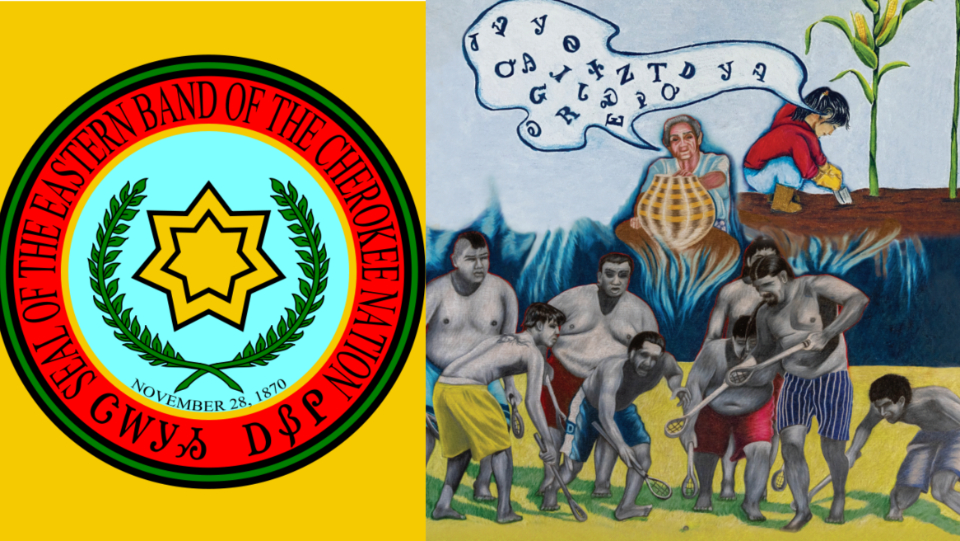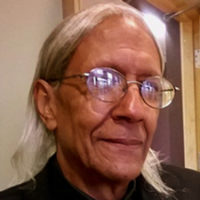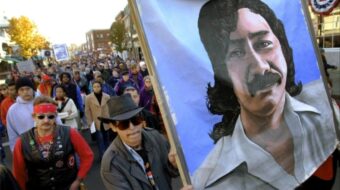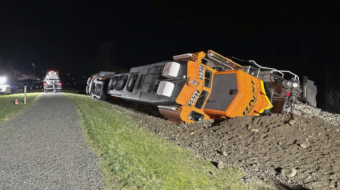
CHEROKEE, N.C.—The Eastern Band of Cherokee Indians (EBCI) held its 110th Cherokee Indian Fair from Oct. 4-8 after two years of cancellations due to the pandemic. In fact, at one point there was uncertainty as to when the fair would resume. Having attended the fair since I was a child, it was a joyous occasion to be back again.
A number of factors rendered this year’s gathering potentially problematic. First, there was a necessary change of location due to the amphitheater canopy at the Ceremonial Grounds developing structural problems, rendering it unsafe. Due to such problems many fair activities were moved to the Cherokee Convention Center, and fair rides were also relocated.
There were mixed sentiments about these changes among some Tribal members, but the changes were made with the safety of Cherokee citizens and all other attendees foremost in mind.
Brief history of the Cherokee Indian Fair

Before proceeding further with this year’s fair, a brief history of the week-long event is in order. In the summer of 1912, the Commissioner of Indian Affairs, Cato Sells, made a special trip to the reservation at Cherokee, N.C., from Washington, D.C. The purpose of his trip was to discuss with Cherokee leaders the possibility of organizing and promoting an Indian Fair. The objective was that the six townships on the reservation each organize a club that would develop into a Farmer’s Organization.
The Big Cove township proceeded under the direction of Cherokee traditionalist leader Will West Long and held a special meeting to elect a Fair Committee. The next decision to be made was where to hold the fair, either at Big Cove or Cherokee. It was decided that the location would be Cherokee, and the next decision made was on what to call the fair. “Cherokee Indian Fair” won out, and so it has been ever since.
The main purpose of the fair was to provide an opportunity for tribal members and the reservation communities to have a grand yearly get-together.
Today’s fair 2022
This year’s fair had as its theme “Hniwi Tsalagi – Say it in Cherokee.” The theme continued: “Every chance you get, speak Cherokee, no matter how much or how little you know. Come up with resources to learn phrases and words in our everyday lives.” This was an emphasis on the paramount importance of the sacredness of the Cherokee language as a necessary part of Cherokee identity and culture.
The fair is held in the town of Cherokee, which is the main administrative center for the reservation. It also showcases Cherokee culture with arts and crafts, including beadwork, wood and stone carving, pottery, painting, drawing, finger weaving, and doll making. It also comes complete with Miss Cherokee pageants, rides, and music by well-known bands.
The 2022 edition of the fair started with a week-long panoply of activities beginning on Tuesday, Oct. 4, and continuing through Saturday, Oct. 8. Each day had a different focus. For example, Tuesday was Parade Day, Wednesday Children’s Day, Thursday Elder’s Day, Friday Veteran’s Day, and Saturday was Community Day. Different activities play out each day.
Highlights of the fair are traditional Cherokee food served at the food booths (one of my favorites is bean bread); the Exhibit Hall with the arts and crafts of the various townships; archery exhibitions for youth and adults; and blowgun demonstrations.
Cherokee Stickball: The Little Brother of War
The highlight for myself and family was, as always, Cherokee Stickball (Anetsa). A little background to the game is in order. It is the all-time favorite of the fair for just about everyone, and everyone has their favorite team.
The game has been described as a combination of boxing, wrestling, football, hockey, rugby, and soccer, which makes it the ultimate in being rough and tumble any way it is cut. There are six communities or townships on the reservation, and each has its own Stickball team. Stickball is still played at the fair by all ages including Youth Stickball, ages 6-9 and 10-12, Men’s Stickball, and Elders’ Stickball.
According to Cherokee oral tradition, the first whites to see the game, who were English, thought the players were actually fighting.
Stickball is an ancient game and a vibrant living tradition that has survived intact to the present-day. Most of the other southern nations play Stickball, and the game can differ somewhat from tribe to tribe. Stickball is a direct ancestor of lacrosse. The Stickball caller, or announcer, speaks in Cherokee and English. While some tribes use two Stickball racquets, Cherokees use only one.
Cherokee Stickball racquets, also called ballsticks, are usually made of hickory with one end bent to having a scoop made of leather or sinew webbing. The racquets are made by specially-skilled craftspeople. Traditionally, medicine was put on the ballsticks to make the ball come to the stick.

There are usually 15 to 18 players on each side. The first team to score ta-la-du-guo, 12 points, wins the game. There are no time outs. The game is played on a field the length of a football field. There are two goal posts at either end. The goal posts are green saplings several feet high.
There are two referees, called drivers, who have long switches and move in and around the players to show their fearlessness. The drivers set the rules of the game before the first tossing of the ball. The drivers make sure to tightly enforce the rules agreed upon.
Stickball is not for the fainthearted. For a start, Cherokee ball players do not wear pads or helmets or any protective gear as in football. In olden times, players only wore breechclouts. Now, shorts are worn. Players tackle one another with enough force to literally knock each other down. Spectators watch with rapt attention. The Stickball games are the high point of the fair for all the regulars.
The games this year had the largest spectator crowds I have seen in years. This was a great comeback for the fair after a hiatus that hopefully will not happen again in its next hundred-plus years.












Comments